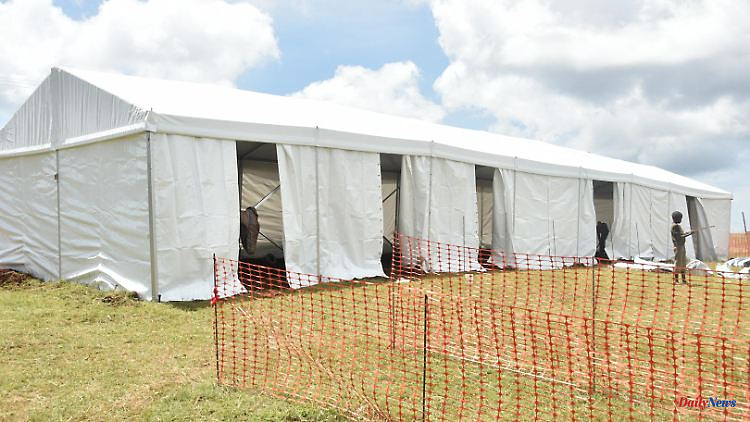The Marburg virus breaks out in Equatorial Guinea for the first time. So far, there are no direct treatment options for the serious disease. Authorities are taking quick action, thousands of people are being quarantined.
According to government reports, nine people in Equatorial Guinea have died from the highly dangerous Marburg virus. Health Minister Mitoha Ondo'o Ayekaba said that in consultation with the World Health Organization (WHO) and the United Nations (UNO), a "health alert" had been declared for the province of Kié-Ntem and the neighboring district of Mongomo in the north-east of the country. More than 4000 people are in quarantine.
The nine deaths were found between January 7th and February 7th, the minister explained. In addition, a "suspicious" death on February 10 is being investigated. According to the WHO, it is the first outbreak of the disease in Equatorial Guinea. In addition to the nine deaths, there are 16 suspected cases with symptoms such as fever, fatigue, bloody vomit and diarrhea.
"Marburg is highly contagious. Thanks to the authorities' swift and decisive action in confirming the disease, the emergency response can quickly go into full swing, allowing us to save lives and contain the virus as soon as possible," said Matshidiso Moeti, WHO Regional Director for Africa.
The Marburg virus, which can cause hemorrhagic fever, comes from the same pathogen family as the Ebola virus. It is transmitted from fruit bats to humans and spreads among humans through direct contact with bodily fluids, surfaces, and infected material. The disease first broke out in August 1967 in Marburg, Germany.
Symptoms include high fever and severe headaches. According to the WHO, the mortality rate is up to 88 percent. There are no approved vaccines or direct treatments for it. A number of potential treatments, including blood products, immunotherapies and drug therapies, as well as vaccine candidates with phase 1 data are currently being evaluated.












